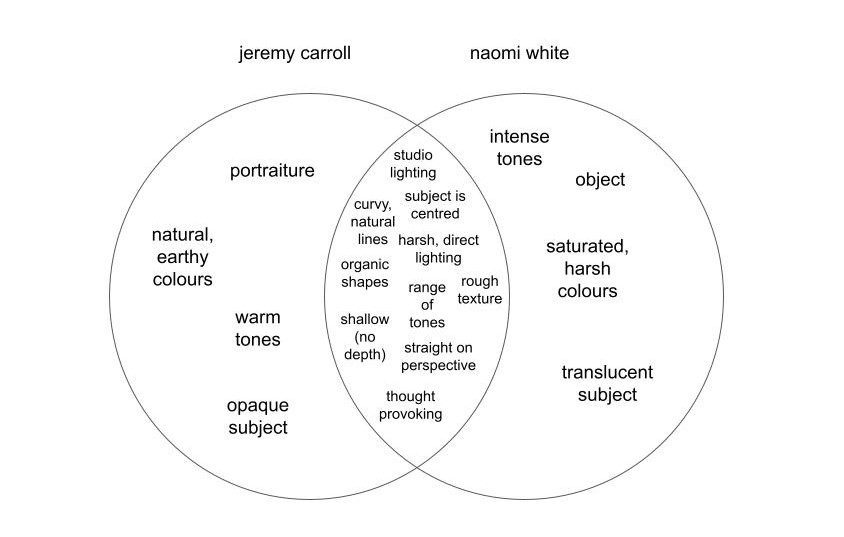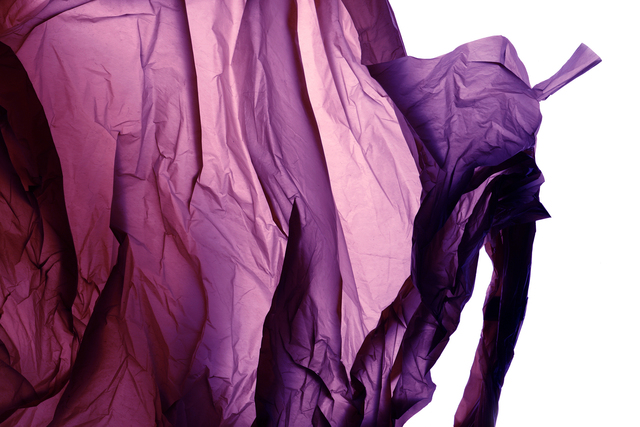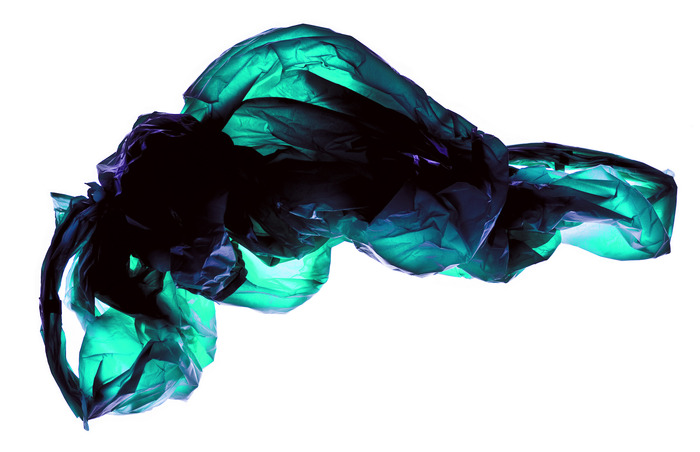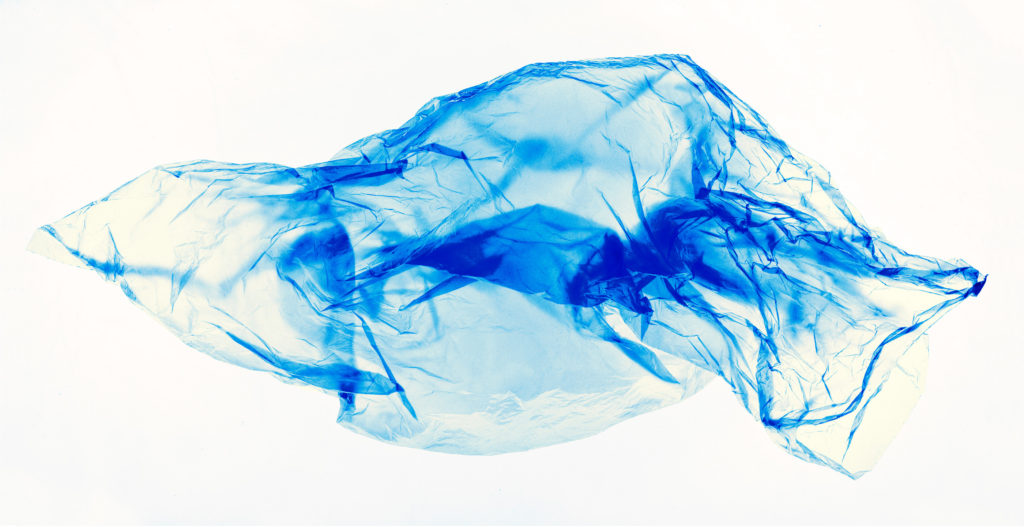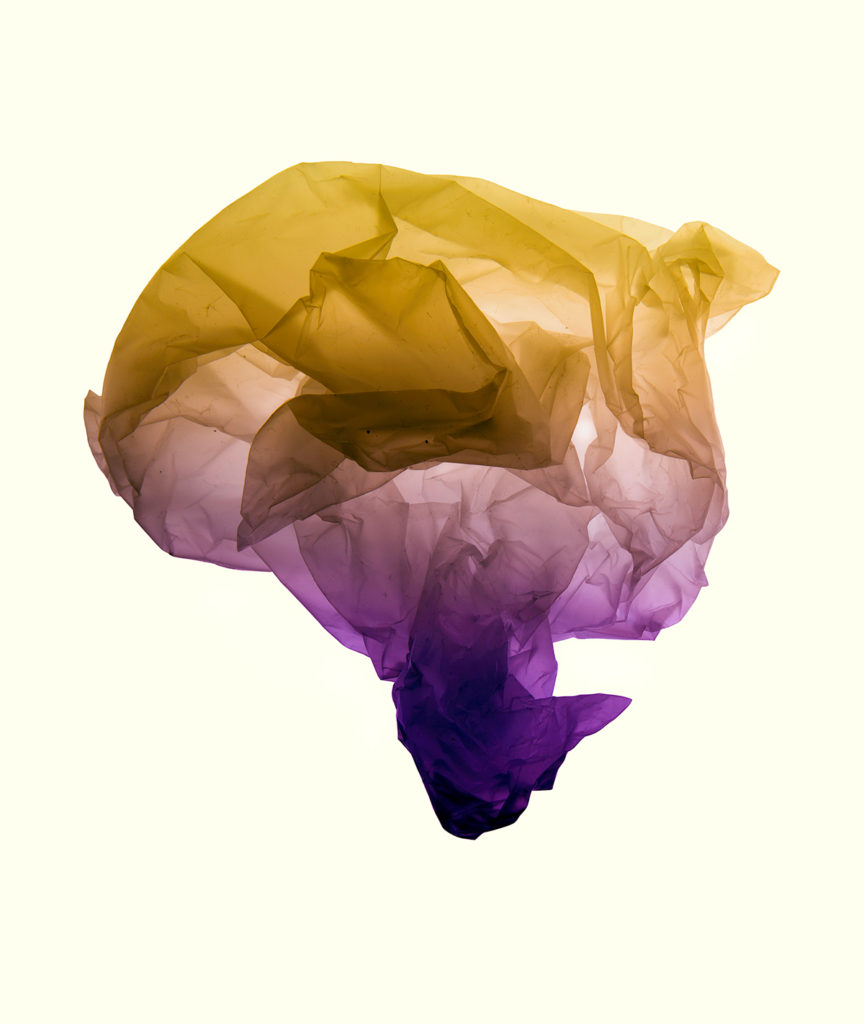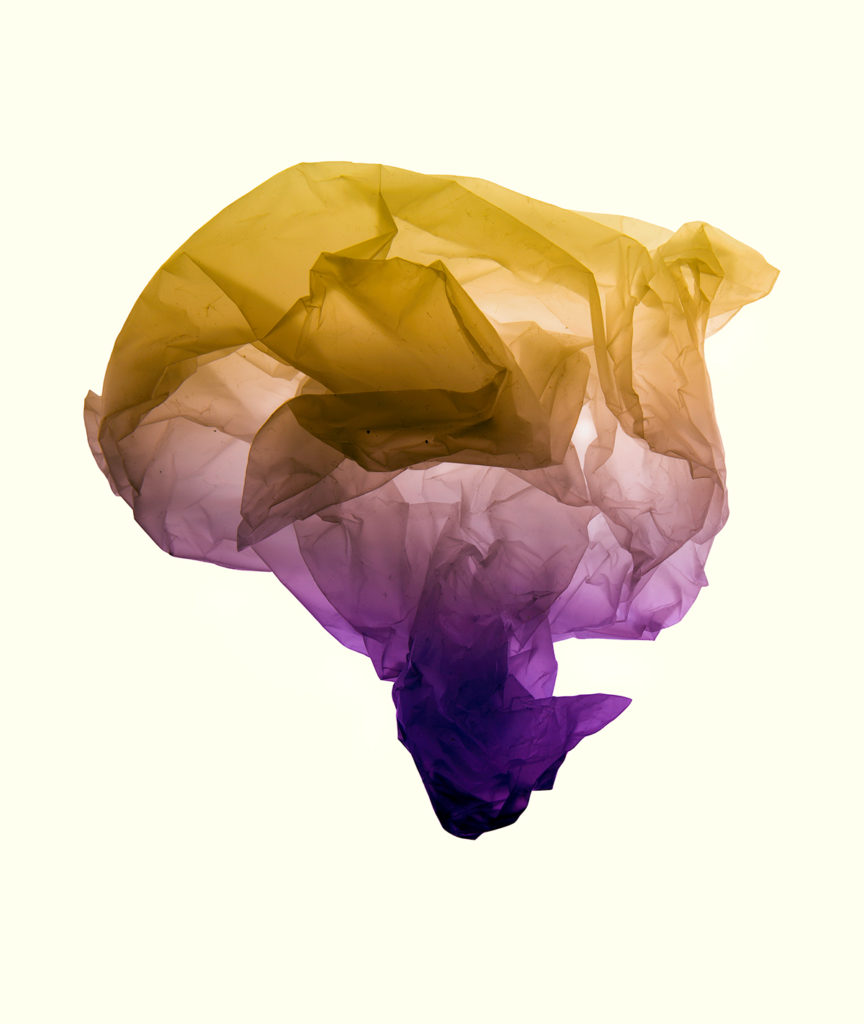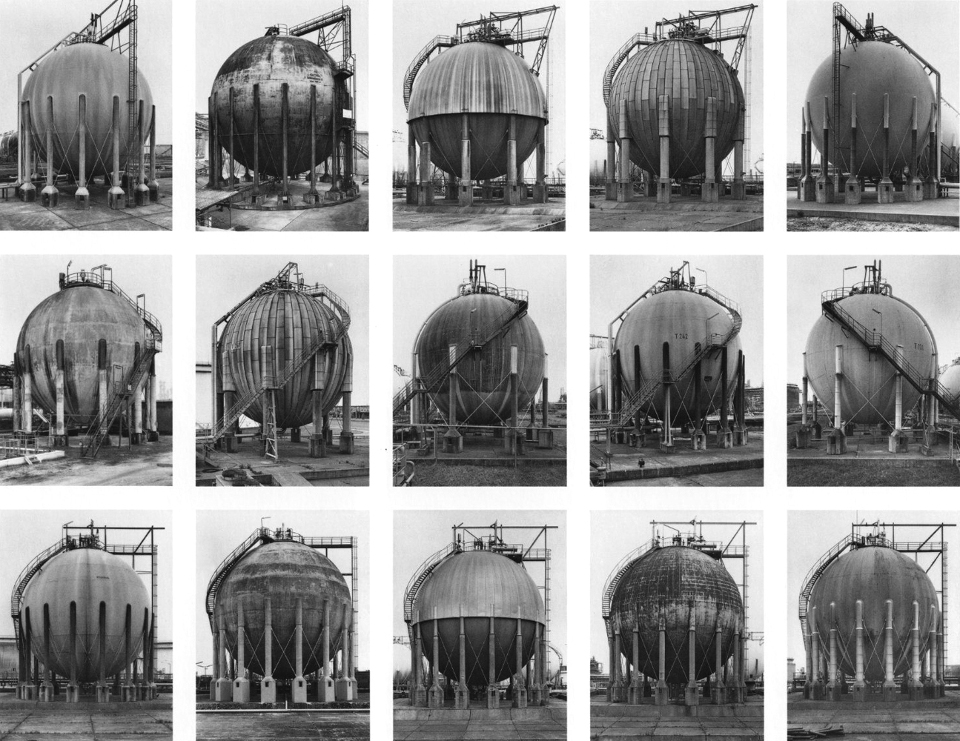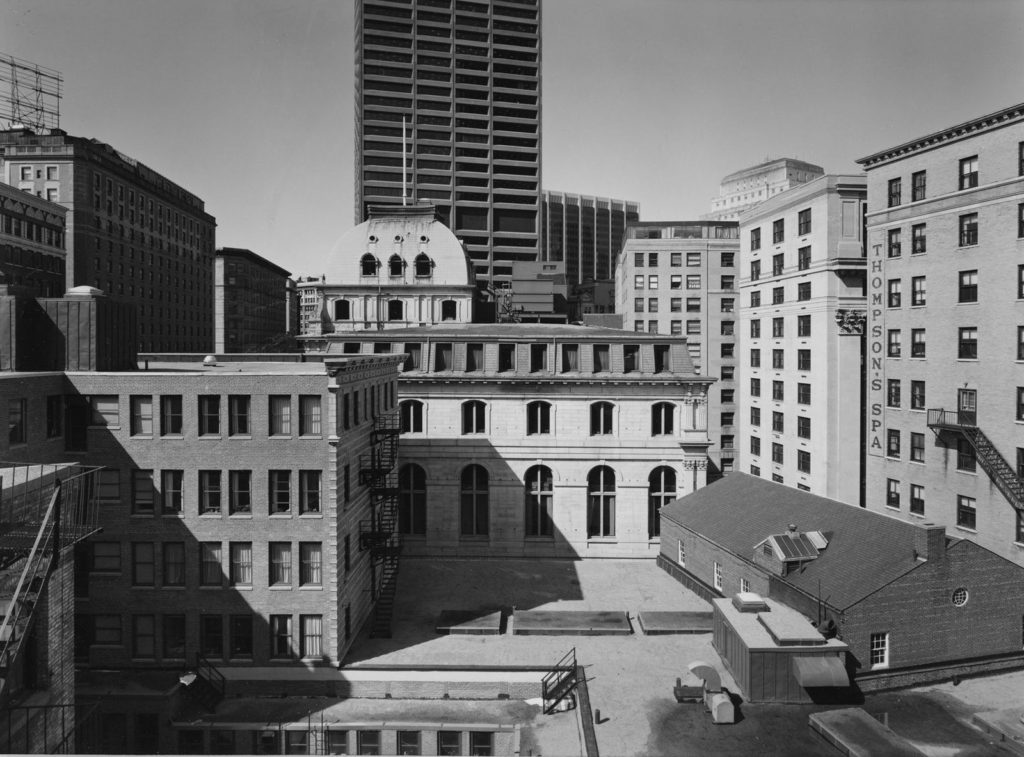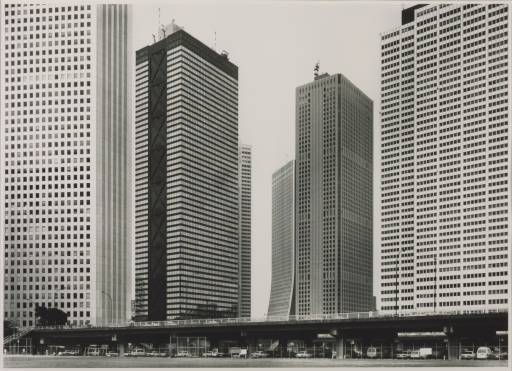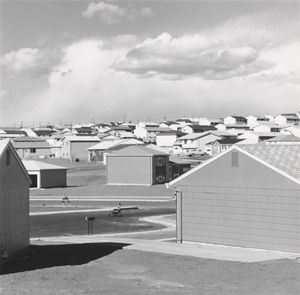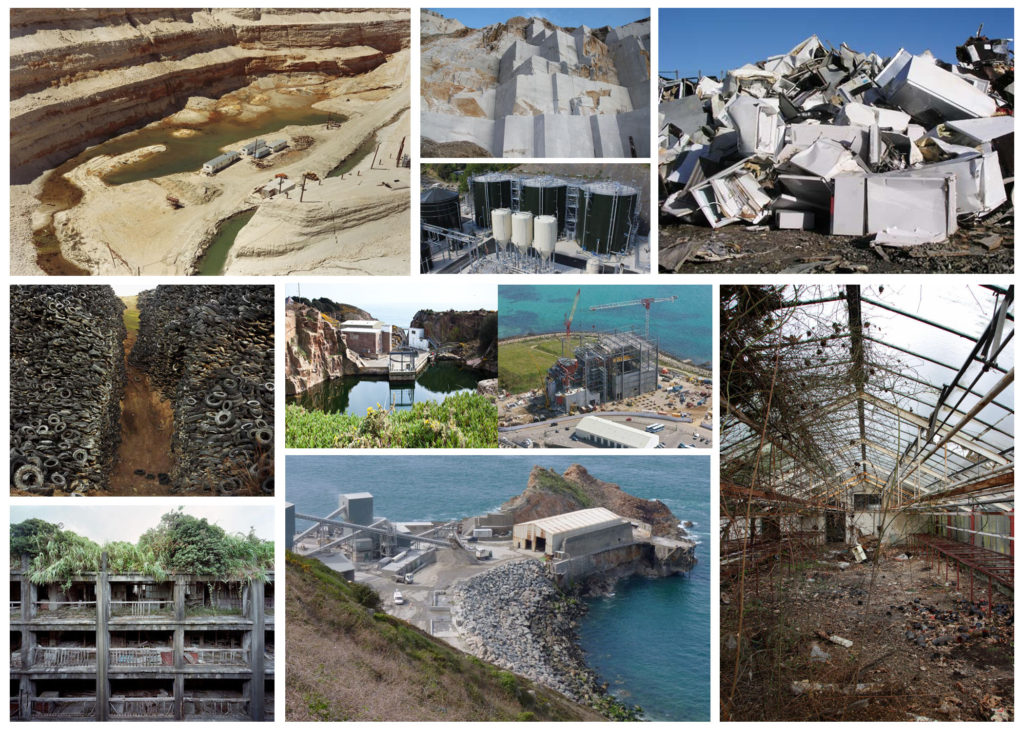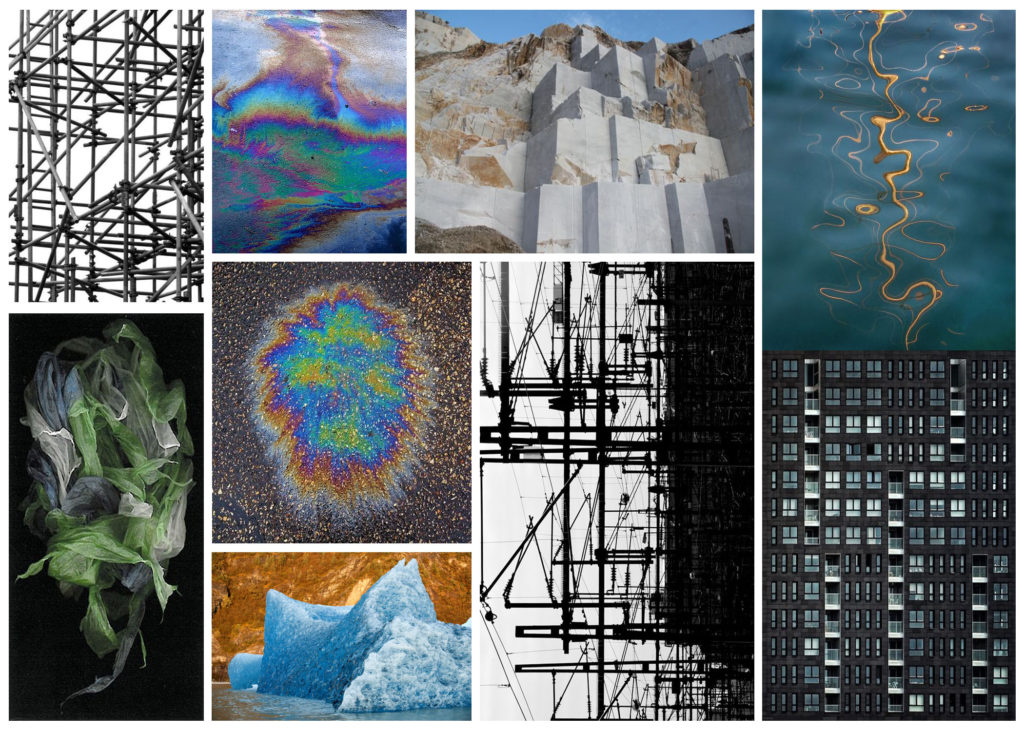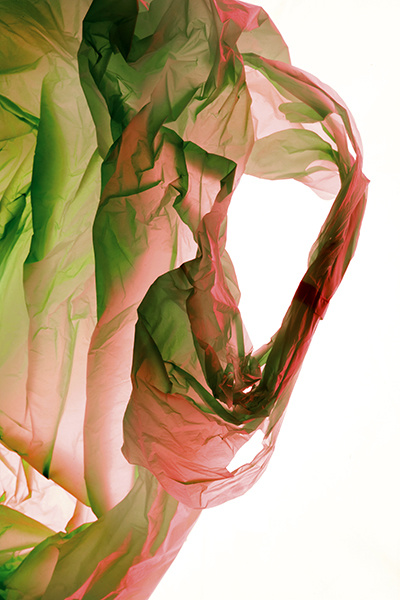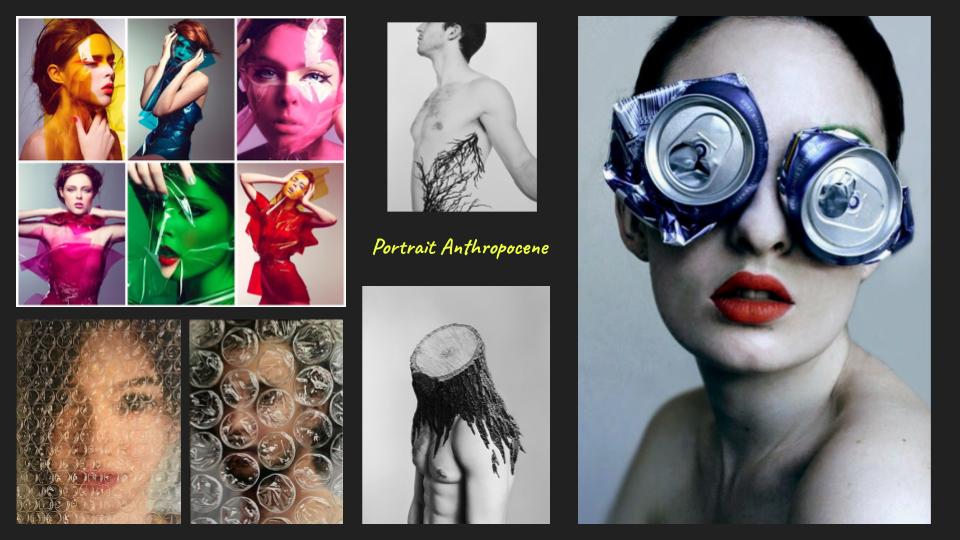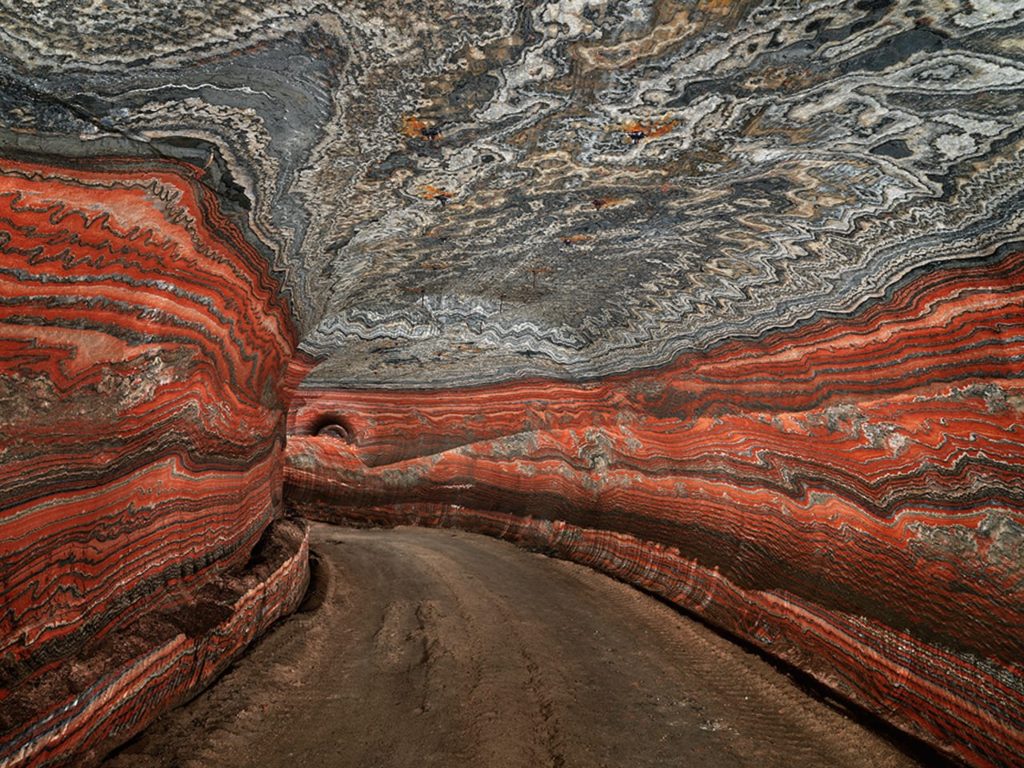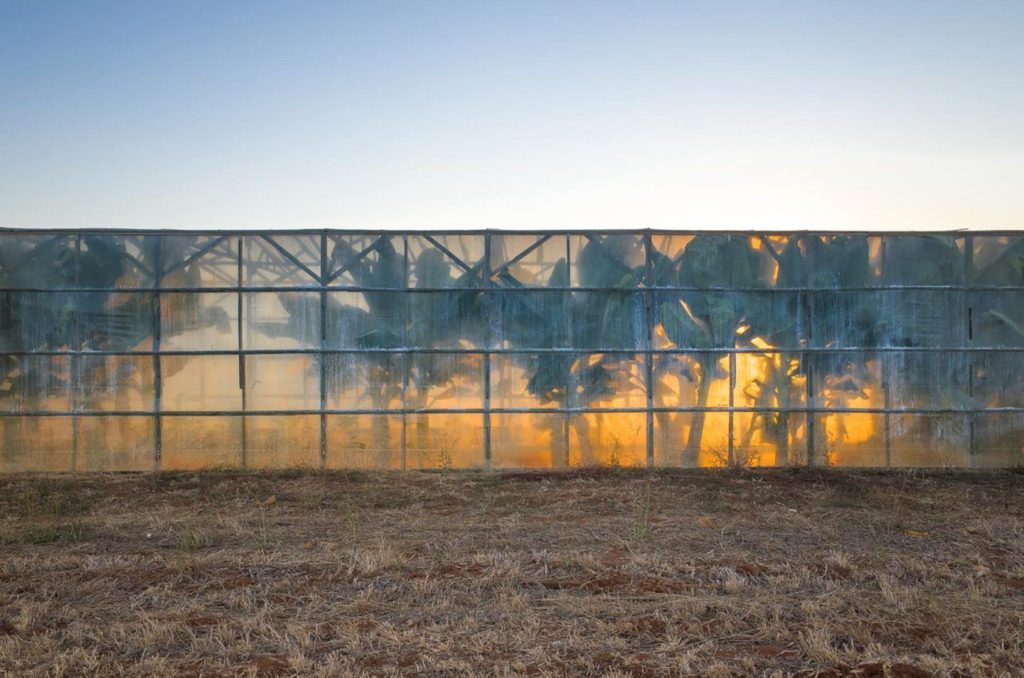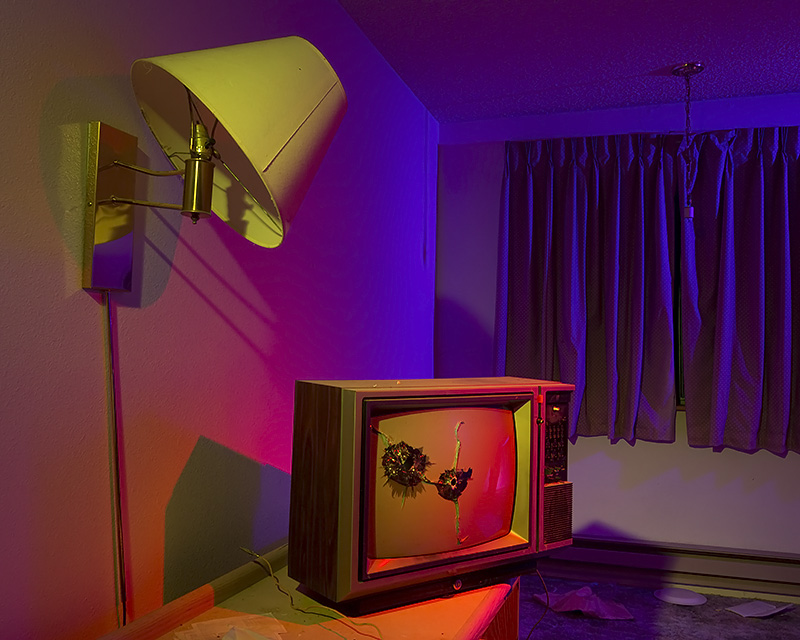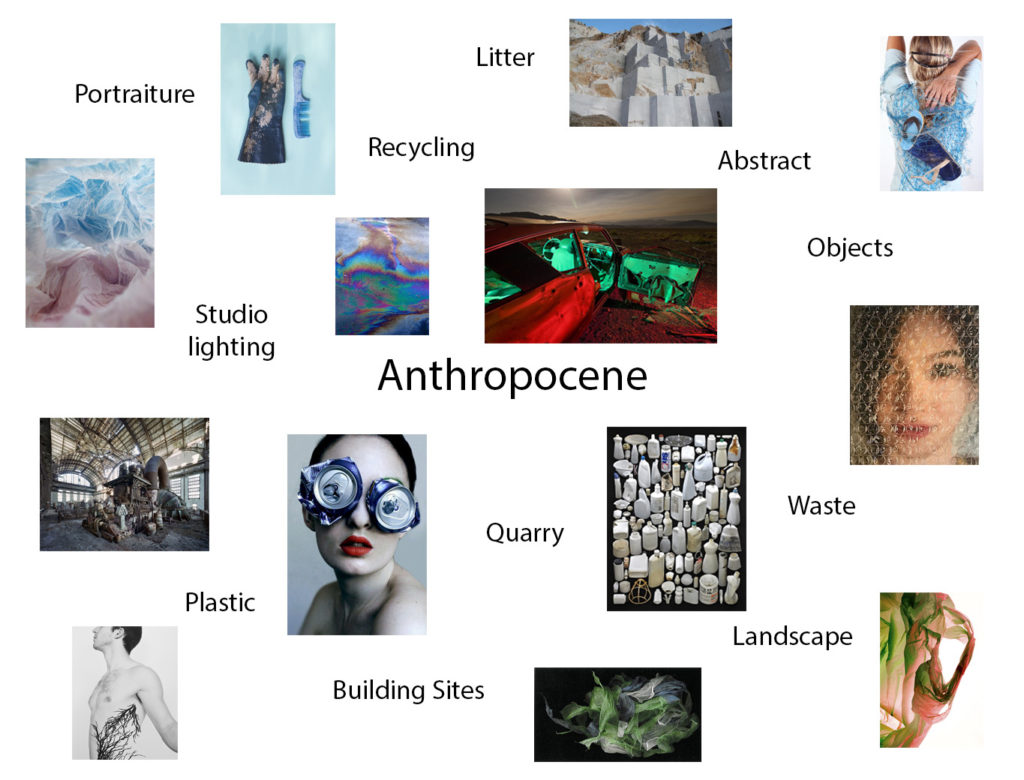JEREMY CARROLL
Jeremy Carroll is a London – based artist and photographer who aims to raise awareness of the Earth’s growing plastic pollution problem by photographing his subject with various plastic objects such as fishing nets, ropes and plastic bags. His 2017 exhibition ‘Entanglement‘ depicts human beings caught up in the waste which is commonly found in seawater and along beaches. With the way things are going, the Ellen MacArthur Foundation predicts that there will be more plastic than fish in the sea by 2050. Carroll’s approach to this pressing international issue is to allow his human subjects to take the place of the various marine life which is constantly being affected by the plastic in the world’s oceans, such as turtles, dolphins, and sharks. By doing this, he hopes that more people around the world will be convinced to reduce their intake of single – use plastics and switch to more environmentally friendly and sustainable alternatives.
NAOMI WHITE
Naomi White is an intersectional feminist, artist, and educator, working on ideas at the intersection of political ecology and photography. Focusing on the transformative power of photography to affect desire and change, much of her work questions how we can shift our focus away from the current racist, capitalist model of domination to one of equity and collective voice, for the sake of all people, animals and the planet. Her work has been shown throughout North America and Europe, and is held in both public and private collections. White’s work draws from a diverse background in art history and film, investigating themes of identity construction in our camera-bound world, focusing on how photography affects materials, memory, and culture.
ARTIST COMPARISON
